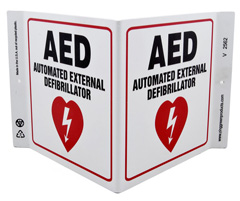| The Home page of ILPI's Safety Data Sheet (SDS) Resource, the leader in SDS information since 1995! | |
| The history and philosophy behind this resource. | |
| A curated collection of books and reference materials concerning Safety Data Sheets and closely related topics. | |
| Paste your plain text SDS into the SDS-Demystifier, and it will be converted into a hypertext-enriched document with links to detailed explanations of each key term. | |
| An extensive list of frequently asked questions about Safety Data Sheets including regulations, content, compliance, and more. | |
| A humorous take on Safety Data Sheet jargon. Fill in the blanks on our entry form to generate a personalized Unsafety Data Sheet to share with your coworkers. | |
| Since 1995, we've maintained this massive curated list of the best places to find Safety Data Sheets on the Internet. | |
| You are here! Way more than a glossary, this hypertext-enhanced resource covers hundreds of SDS-related terms and expert knowledge. Each entry includes both the SDS relevance and links to additional authoritative resources. | |
| Archived results of Safety Data Sheet related polls taken by some of our millions of site visitors | |
| The OSHA regulations behind SDS regulations, including the inspection guidelines and over 400 official interpretations letters under the Hazard Communication Standard | |
| Commercial suppliers of SDS authoring and management software as well as cloud compliance services. | |
| Commercial companies that will create SDS's for your specific needs as well as SDS translation companies. |

Safety signs, banners, and scoreboards? Get yours at Safety Emporium!
Definition
Tachycardia is a fast heart rate (100 beats per minute or faster in an adult).
This can be compared to bradycardia which is an unusually slow heart rate, usually signified by a pulse under 60 beats per minute.
Additional Info

Get your AED and other wall-projecting safety signs from Safety Emporium.
Tachycardia can be caused by exertion, strenuous exercise, emotions, hyperthyroidism (overactivity of the thyroid gland), disease, injury, heart disorders, or exposure to certain drugs or chemicals.
Ventricular tachycardia refers specifically to tachycardia that is initiated in the ventricles of the heart. You may have heard the slang "V-tach" used for this condition on medical television shows such as E.R.
Supraventricular tachycardia is initiated in the area of the heart above the ventricles and is sometimes abbreviated SVT.
There are many additional subtypes of tachycardia, but these are beyond the realm of focus here (Safety Data Sheets and related safety documents). See Further Reading below for more information.
SDS Relevance
This term usually appears in Section 11 (toxicological information) of a Safety Data Sheet as a symptom of chemical exposure. However, an abnormally fast heart rate could be due to chemical exposure, a heart attack, or simply a panic attack, among other causes. Read the SDS's of the chemicals you work with so you know if they can affect the heart rate or body chemistry. If you ever experience an unusual heart rate be sure to seek immediate medical attention.
Further Reading
- Ventricular tachycardia at the NIH's Medline Plus Medical Encyclopedia.
- Ventricular Tachycardia (for Professionals) at the American Heart Association.
- Supraventricular Tachycardia from Circulation, 2002, 106, e206 - includes terrific color drawings.
- Tachycardia, a multipage resource at MayoClinic.com
- Cardiac Literature, including Myocardial Infarction, arrthymias, tachycardia, and angina at BioMedSearch, a search engine for highly technical info on the topic. The site was unreachable as of late 2020 so this is a link to the Internet Archive Wayback Machine.
See also: bradycardia, palpitation.